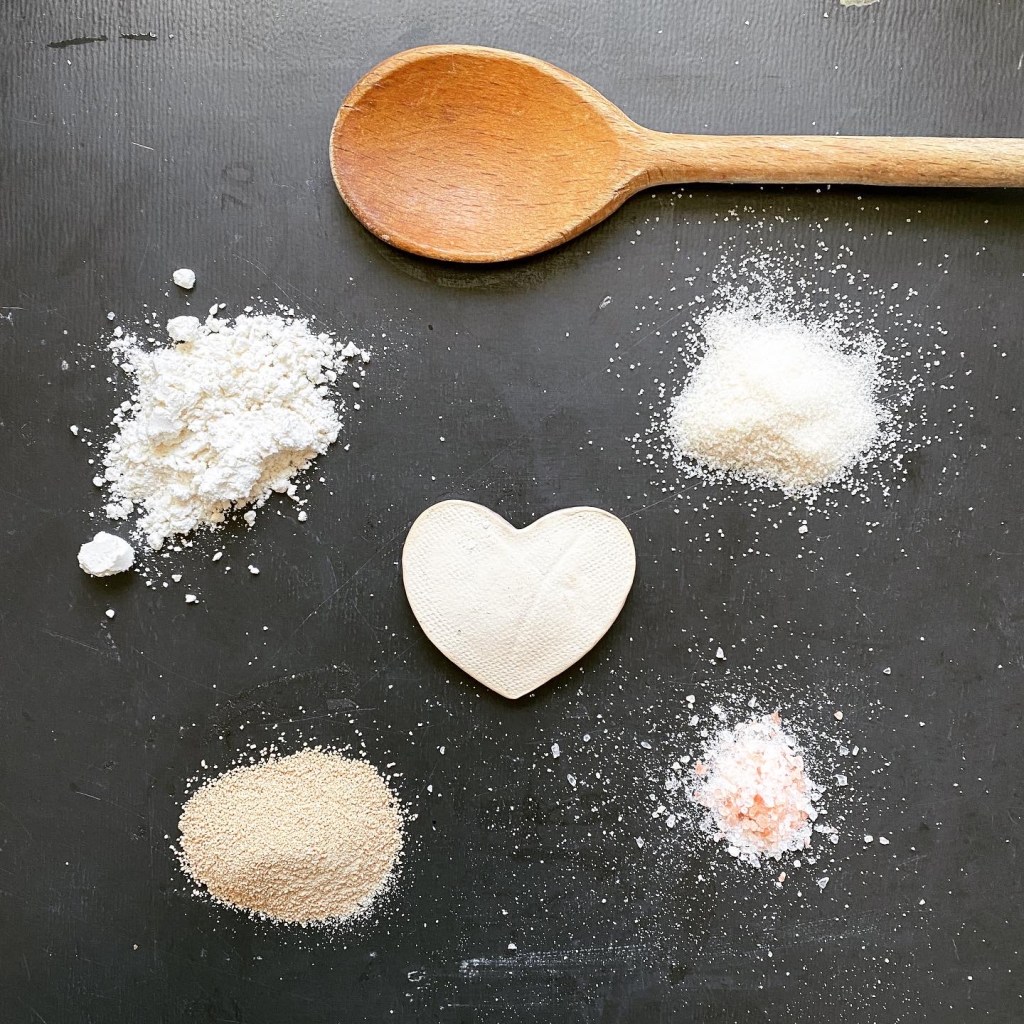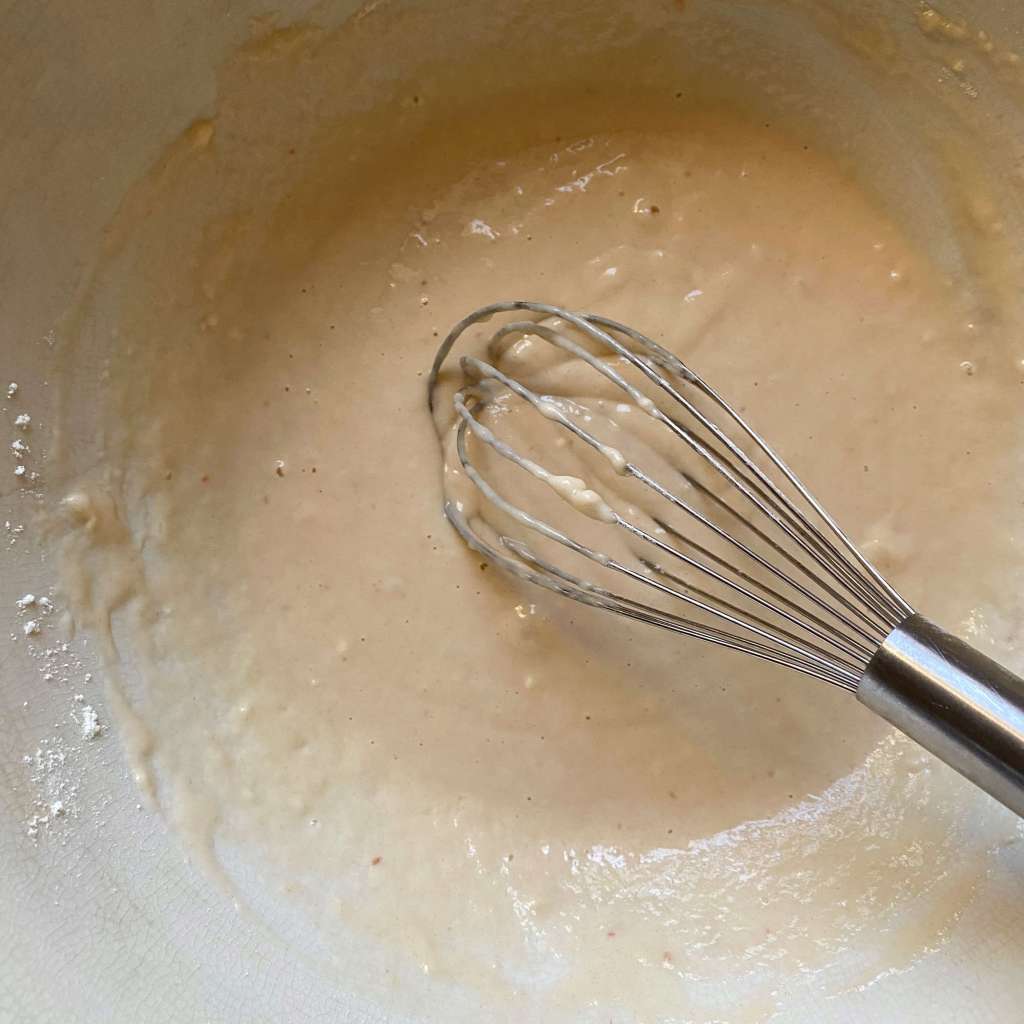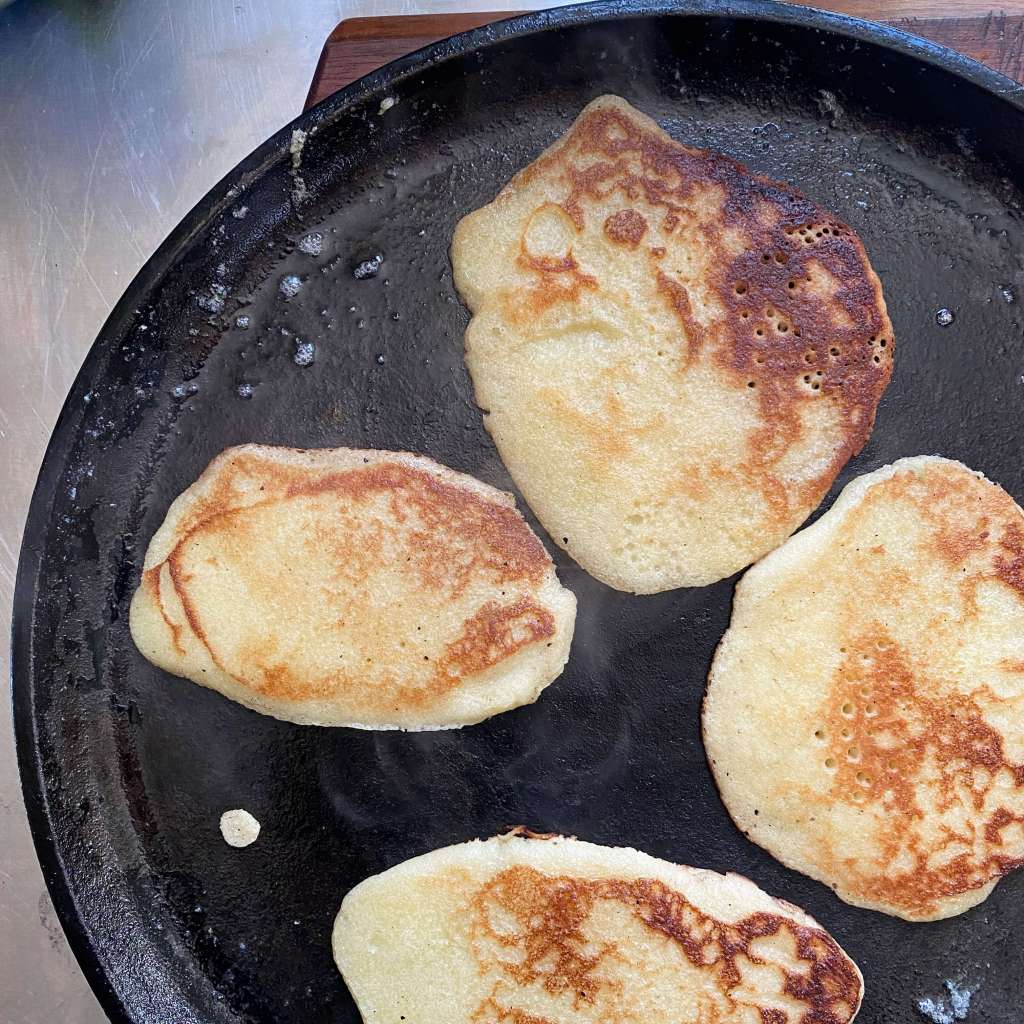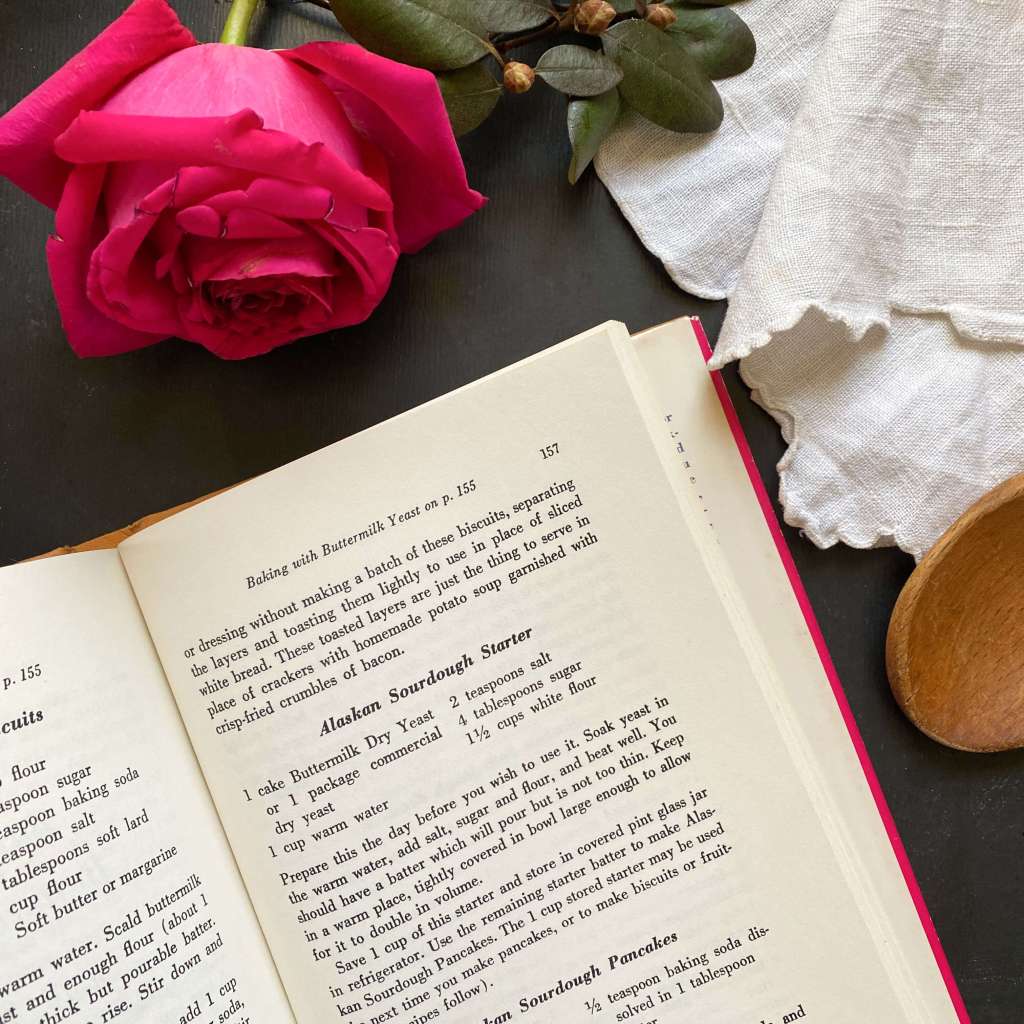
{Warning: This post contains disturbing information related to a real-life event. If you are sensitive to stories about true crime, you may not want to read beyond the recipe sections.}
It could be said that Ada Lou Roberts’ arthritis launched her into the culinary zeitgeist, but that would only be a portion of the story. Also attributing was that one 1950s luncheon where forty-five attendees requested the recipe for her homemade buckwheat tea buns. And then there was her family of course who played a big part too. Her beloved mother and grandmother in particular, whispering all their kitchen secrets into her middle-aged ears, reminding Ada Lou of what she learned decades earlier as a small girl mastering the stove in her childhood home.
Ada Lou Roberts may not be a household name today, but back in the 1960s and 1970s, she was a go-to resource for bread baking. The author of three cookbooks and one novel, like many women born in the early 20th century (1907 in Ada Lou’s case) she learned how to cook from her mother and grandmother on their family farm in rural Montgomery County, Iowa. Her mother cooked every day for a large family that included seven brothers and sisters, extended family and the workers who helped out on the farm. Ada Lou’s grandmother helped out with the baking.
Many of her grandmother’s recipes were in the traditional Pennsylvania Dutch style, incorporating yeast and other natural leavenings, whole grains, seeds, and herbs, all of which they grew themselves on the farm. Ada Lou grew up braiding bread, feeding her family, learning about health, about harvest, and about happiness through time spent in the kitchen among dough balls and mixing bowls, flour sacks and family.
After Ada Lou got married, her and her husband Marcus, moved to their own farm in Kansas, known as Rose Lane. There Ada Lou continued the family baking, this time in her own busy kitchen as she raised her two boys. A diagnosis of early on-set arthritis in her hands led her to appreciate the tactile nature of kneading dough and the physical therapy it continuously provided to keep her hands active and nimble.

In 1960, she published her first cookbook, Favorite Breads From Rose Lane Farm. She was 53 years old at the time it debuted. By that point, she had been tinkering around with her family’s recipes for more than four decades, adjusting them here and there, modernizing them as American kitchens became more modern themselves. The buckwheat tea bun recipe featured prominently in the cookbook. Ada Lou said it was easier to publish one cookbook than handwrite forty five copies of the same recipe. The luncheon ladies were delighted.
Upon debut, reviewers referred to Favorite Breads as a sweet little baking book, but by 1963, it had become a highly recommended recipe collection stuffed full of valuable information. Championed by food columnists across the country, every time someone wrote to the newspaper for help, Ada Lou’s book became the answer for their bread-making woes.

In 1967, her second book Breads and Coffee Cakes with Homemade Starters from Rose Lane Farm was published. Again inspired by requests, this cookbook was born from letters written by fans of Ada Lou’s first cookbook. This time they asked for more recipes on homemade starters. Ada Lou filled an entire cookbook with them.

By definition, a homemade starter refers to a fermented dough that requires a lengthier amount of time to develop prior to baking. One common starter example is sourdough bread. The most famous sourdough bread comes from San Francisco, where the air is credited as a key ingredient alongside flour and water in creating that signature San Francisco sourdough flavor. Bakers from all over the world have tried to recreate that same sourdough taste but to no avail. It’s the air that sets it apart. Making starter recipes is a universal baking act known the world over, but it’s also highly individualistic depending on your location and your cooking environment.
In today’s post, we are featuring a starter recipe of Ada Lou’s, from her second book, Breads and Coffee Cakes with Homemade Starters. Today’s post features not bread or coffee cake but instead sourdough pancakes. It’s a weekend meal fit for kings and queens of the kitchen and anyone who likes to slow down on a Saturday and watch the overnight batter bubble and pop.

The recipe we are making today is really two recipes in one, Alaskan Sourdough Starter and Alaskan Sourdough Pancakes. There’s no note from A.L. as to the Alaskan connection for this particular set of recipes, but sourdough and the Last Frontier have had an ongoing love affair since the Gold Rush days. In the 1850s, miners from other states scampered up to Alaska with sourdough batches in hand as sustenance to carry them through all their mining adventures. Quickly, it became part of the food fabric of the state. So much so that even newcomers to Alaska today are still referred to as “sourdoughs.”


In my family, we once had a starter recipe that was traded back and forth between my aunt in California and my grandfather in Arizona for close to twenty years. It came to become an honored guest at parties and even went on family vacations with us. There are opposing memories between all the cousins now as to whether this family starter was for pancakes or for bread. One remembers sourdough bread, the other buckwheat pancakes, while another remembers sourdough pancakes and another recalls buckwheat bread. Confusion aside, we all remember it being delicious. Both my aunt and my grandfather passed away in the 1990s, so we don’t have them to set the record straight, but I think they were both pretty intrepid for tackling starter recipes to begin with and then keeping one going year after year for decades even though they lived 700 miles apart. Starter recipes are fun that way. They can be individualistic, inclusive, creative, and captivating all at once.

Ada Lou’s pancake recipe is delicious and bears that same sort of tangy, otherworldly flavor that sourdough bread evokes. Made up of simple pantry ingredients, the beauty of a good starter is in the verb itself. You just start. And then carry on. In give-and-take fashion, a portion of your very first batch gets saved out and then added to a future starter, where again a little bit of that future starter then gets reserved for the next starter after that and then so on and so on. Little portions of one combine into another. Recipe after recipe, week after week, year after year until you become like my Aunt Patti and Grandpa Phil still incorporating a portion of that same original starter into pancakes (or bread!) twenty years later. The longer your starter lives, the more incredible the flavor. Some starters have lived for more than 150 years and are still going strong.
For anyone new to the starter concept, it’s easier to explain while highlighting the steps in the recipes, so I’ll get right to the making of it. Pancake eaters await!

Alaskan Sourdough Starter
1 package of commercial dry yeast
1 cup warm water
2 teaspoons salt
4 tablespoons sugar
1 1/2 cups white flour
Prepare this one the day before you wish to use it. In a large mixing bowl, combine the yeast and warm water. Then add the salt, sugar, and flour and beat well. The batter should be thick but still pourable at this stage. Cover the bowl tightly with plastic wrap and put it in a warm place until it doubles in bulk. (Note: I put my bowl in the greenhouse where it rested at 82 degrees for 14 hours. Other ideal places are the top of the fridge, the back of the stove, on top of a heat register or near a radiator or fireplace. Ideally, you need a draft-free spot that will surround the bowl with an equal amount of warmth on all sides).



By the next day, your starter should have doubled in bulk. It will be dotted all over with air bubbles like this…

Before you move on to the next step of making the actual pancakes, remove one cup of this starter from the bowl and store it in a covered glass jar in the refrigerator…


Once you have completed that step, you have officially begun. Congratulations! Your starter is born. The next time you make pancakes (not for this recipe below but in the future), you’ll start all over again and make a new batch of Alaskan Sourdough Starter, but instead of adding yeast next time as the recipe calls for, you’ll substitute to it with the one cup of fridge starter instead. And then following the same process as above, once that batch has risen overnight, you will again remove one cup of the starter before you make that next batch of pancakes. You’ll store it in the fridge just like you did this time, and then that starter will be ready and waiting for the third time you make these recipes later on down the road. So that each time, you’ll always be adding to and then taking away one cup of starter to be reserved for a future date.
Now on to the pancakes…
Alaskan Sourdough Pancakes
(makes 12 4″ inch pancakes)
2 tablespoons butter
1 egg, well beaten
1/2 teaspoon baking soda dissolved in 1 tablespoon water
Alaskan Sourdough Starter (the full recipe you just made minus that 1 cup that you just reserved in the fridge)
To the starter batter add the butter, egg, baking soda and water. Mix thoroughly. Heat your griddle or pan. Add butter or cooking oil to the pan if necessary and then cook your pancakes. Once they have browned on each side they are ready to serve.

I served these pancakes with fresh blueberries, sprigs of mint, a dollop of butter and our favorite local Connecticut maple syrup harvested from Swamp Maple Farm, just a few miles down the road from 1750 House.

After getting a complete tutorial from the owner of Swamp Maple this past November, we now have all the info we need to start tapping our own sugar maples next fall. We are already looking forward to mountains of pancakes and 1750 House syrup!

Delicate and tender like crepes with slightly salty, slightly tangy notes, these pancakes were so well-rounded in flavor that the only way I can think of describing them is as a perfect vehicle. Not too sweet, they work in harmony with the syrup, the butter, the blueberries, the mint, in such a way that no one ingredient overpowers the other. Instead, it’s just a perfect meeting of all the taste sensations. Spongy in texture, the yeast gives this stack a bit more sustenance, so that you feel energized after eating it – not like you want to go take a nap.

As with all beginning starter recipes, the sourdough taste will become more present, more fragrant, more tangy as future batches are made incorporating the reserved starter from the fridge each time. Ada Lou advises using this method below next time you want to make up another batch of pancakes using the reserved starter that’s now sitting in the fridge…

While I was making these pancakes I couldn’t help but imagine Ada Lou in her idyllic-sounding Rose Lane Farm kitchen whipping up big batches of pancakes for her hungry boys. I couldn’t wait to find a photo of her or her Kansas farmhouse to share with you so that we could all see where this gorgeous set of recipes stemmed from. Nothing surfaced though. I even went back so far in time as to try to find a photo of her childhood home in Iowa where she learned how to cook with her mother and grandmother. I didn’t find that either. I did however find something else. Something terrible.
In 1912, when Ada Lou was five years old, two of her older sisters, Ina (aged 8) and Lena (aged 12) were killed by an axe murderer while spending the night at their friend’s house. It was a horrific crime that took not only the lives of Lena and Ina but also the entire family that they were staying the night with – two parents and their four children. This all occurred in the small, quaint, good-to-know-you hometown of Villisca, Iowa where Ada Lou grew up. It was a shock to the entire community as both families were very respectable and very well-liked. The murder made national headlines. Seven thousand people attended the funeral to lay Ina and Lena to rest. Referred to as the Villisca Axe Murders, for years throughout the 1910s and 1920s, Ada Lou’s parents and investigators tried to find the murderer and the motive, but the crime is still unsolved today.
I hesitated about including this information in this post. On one hand, it didn’t seem to have a lot to do with a pancake recipe. But on the other hand, it had a lot to do with Ada Lou. Her whole baking career was based on her family and the memories, the skills, and the recipes she learned from them. First in the childhood kitchen of her Iowa farmhouse and then in her adult kitchen at Rose Lane Farm in Kansas. In those early years of her life, while Ada Lou was learning to bake at home from her mother and her grandmother, her family was grieving and trying to process the horrific tragedy that senselessly wiped away her sisters’ lives in a blink.
I wonder if all that looking back in her mid-life years, before Ada Lou published her first cookbook, was some sort of salve for her and her family’s broken heart. I wonder if baking provided some sort of comfort to Ada Lou in those childhood days. A task that busied her hands, that focused her attention, that turned her gaze towards creating something wonderful, something lovely, something good for her family that had been so devastated by such a terrible act. Ada Lou was only five when her sisters were killed, and possibly too young to fully grasp at the time what specifically happened to them. But she grew up and came of age in the anxiety-leaden aftermath of their deaths. Living day to day with the desperation of her parents’ continual questioning, continual searching for answers, for understanding.
People come to baking for all different reasons… health, creativity, entertainment, curiosity, and comfort. I wonder if baking became Ada Lou’s salvation and then ultimately her success at carrying on with life post-tragedy. I wonder if she thought of it as a way to start putting her family back together one nourishing slice of bread or pancake at a time.
Ada Lou passed away in 1983, and to my knowledge, there is no record that I have found at least, where she ever publicly spoke about what happened to her sisters or how it affected her family or affected her own life. There isn’t even any article or news story that connects Ada Lou the baker with Ada Lou the sister of two murdered girls. Maybe this is why I couldn’t find any photos of Ada Lou or her Kansas farm, even at the height of her popularity in the 1960s and 70s, when everyone was clamoring for her recipes. Maybe Ada Lou wanted to set her personal life aside. Maybe it was just too painful to talk about. Maybe the act of baking and talking about baking and writing about baking was the only way forward. The only way for Ada Lou and her family to start again.

There’s something hopeful and optimistic and anticipatory about starting a starter recipe. That’s why I decided to include the whole story of Ada Lou’s life alongside her recipes. I think her story despite its tragic start, is one of hope, bravery, and admiration. It gives context to her baking and shows her strength of character and commitment to keeping her family’s culinary talents alive. Despite the bad, she extolled the good. Memory by memory. Bread by bread, cake by cake, recipe by recipe.
I hope these starter recipes start something wonderful in your kitchen. If we’re lucky, we might all just see our 2023 starters still working their magic in 2043 and 2053, and 2063 and maybe even beyond. Keep us posted if you decide to join us in this sourdough arena – we’d love to hear how things are going in your kitchen.
Cheers to Ada Lou for showing us all about the importance of new beginnings.



Fabulous article !!!! 🙏👏🙏👏
Thank you so much for telling this beautiful and so poignant life.
Ada Lou is in my heart now.
You are a very talented writer 😊
On Sun, 19 Feb 2023 at 04:56, In the Vintage Kitchen: Where History Comes To E
LikeLiked by 1 person
Thank you so much Sophie for your kind comments! So glad you enjoyed the post:)
LikeLike